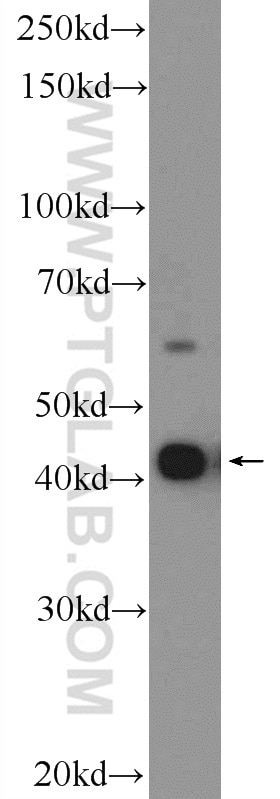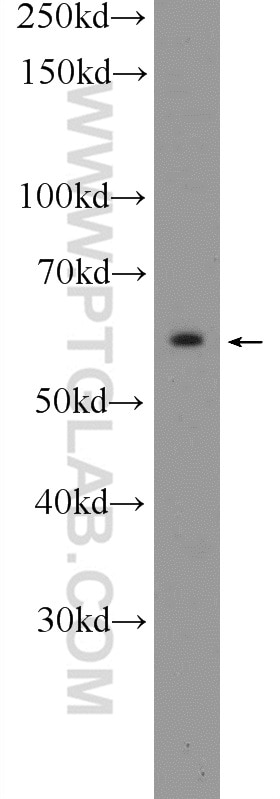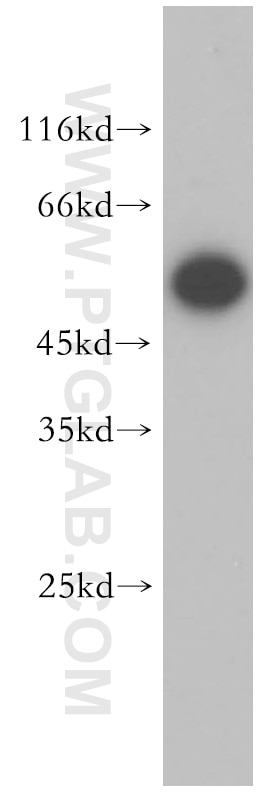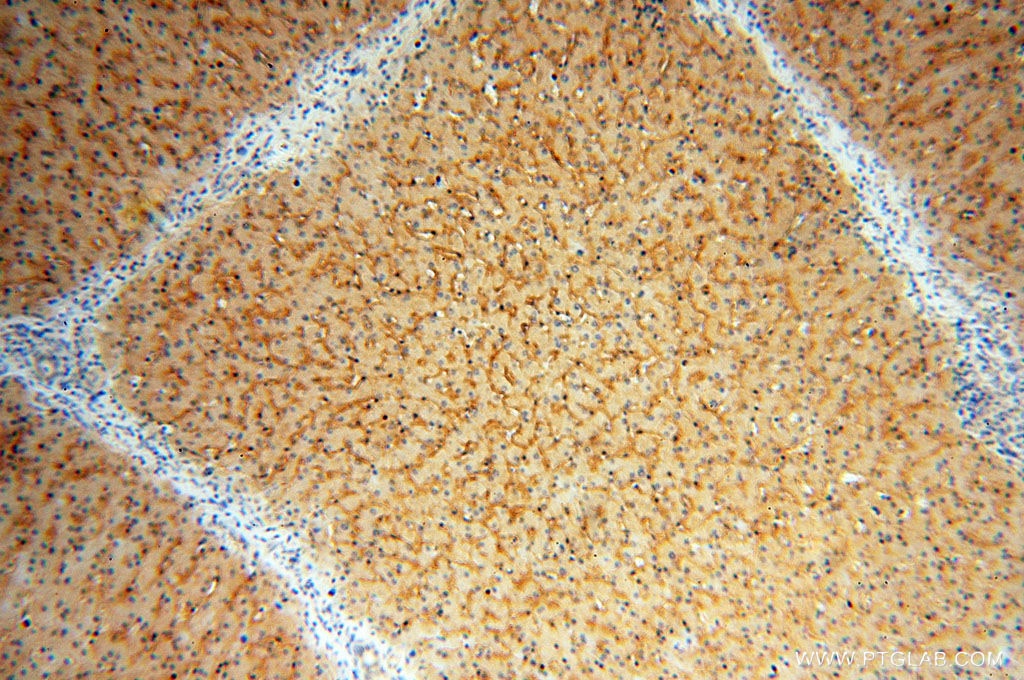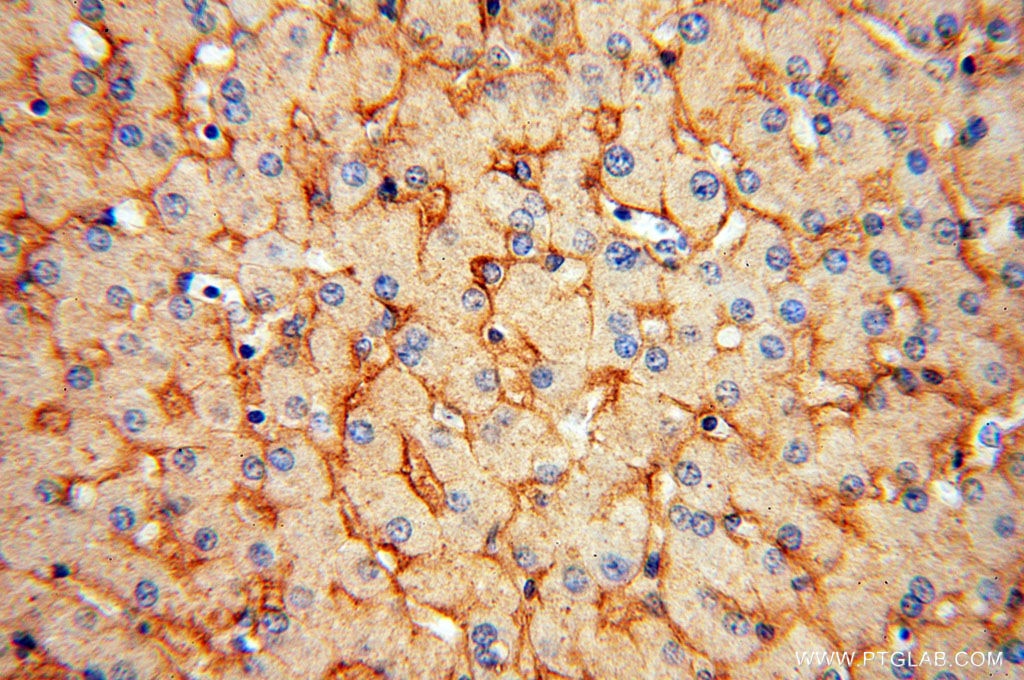Published Applications
| KD/KO | See 1 publications below |
| WB | See 15 publications below |
| IHC | See 5 publications below |
| IF | See 1 publications below |
Product Information
17186-1-AP targets STEAP3 in WB, IHC, IF, ELISA applications and shows reactivity with human, mouse, rat samples.
| Tested Reactivity | human, mouse, rat |
| Cited Reactivity | human, mouse, rat |
| Host / Isotype | Rabbit / IgG |
| Class | Polyclonal |
| Type | Antibody |
| Immunogen |
CatNo: Ag10970 Product name: Recombinant human STEAP3 protein Source: e coli.-derived, PGEX-4T Tag: GST Domain: 1-204 aa of BC042150 Sequence: MPEEMDKPLISLHLVDSDSSLAKVPDEAPKVGILGSGDFARSLATRLVGSGFKVVVGSRNPKRTARLFPSAAQVTFQEEAVSSPEVIFVAVFREHYSSLCSLSDQLAGKILVDVSNPTEQEHLQHRESNAEYLASLFPTCTVVKAFNVISAWTLQAGPRDGNRQVPICGDQPEAKRAVSEMALAMGFMPVDMGSLASAWEVEAM Predict reactive species |
| Full Name | STEAP family member 3 |
| Calculated Molecular Weight | 488 aa, 55 kDa |
| GenBank Accession Number | BC042150 |
| Gene Symbol | STEAP3 |
| Gene ID (NCBI) | 55240 |
| RRID | AB_2197841 |
| Conjugate | Unconjugated |
| Form | Liquid |
| Purification Method | Antigen affinity purification |
| UNIPROT ID | Q658P3 |
| Storage Buffer | PBS with 0.02% sodium azide and 50% glycerol, pH 7.3. |
| Storage Conditions | Store at -20°C. Stable for one year after shipment. Aliquoting is unnecessary for -20oC storage. 20ul sizes contain 0.1% BSA. |
Protocols
| Product Specific Protocols | |
|---|---|
| IHC protocol for STEAP3 antibody 17186-1-AP | Download protocol |
| WB protocol for STEAP3 antibody 17186-1-AP | Download protocol |
| Standard Protocols | |
|---|---|
| Click here to view our Standard Protocols |
Publications
| Species | Application | Title |
|---|---|---|
Nat Cell Biol A global analysis of SNX27-retromer assembly and cargo specificity reveals a function in glucose and metal ion transport. | ||
J Exp Med Ferrous iron-activatable drug conjugate achieves potent MAPK blockade in KRAS-driven tumors. | ||
Int J Biol Macromol Exosomes from tannic acid-stimulated macrophages accelerate wound healing through miR-221-3p mediated fibroblasts migration by targeting CDKN1b | ||
J Nucl Med Ferronostics: Measuring Tumoral Ferrous Iron with PET to Predict Sensitivity to Iron-Targeted Cancer Therapies. | ||
Blood Adv Differences in Steap3 expression are a mechanism of genetic variation of RBC storage and oxidative damage in mice. |

